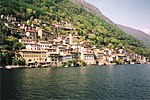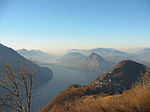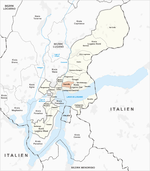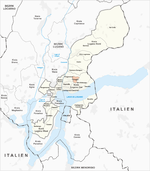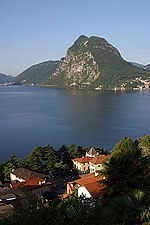Swiss Customs Museum

The Swiss Customs Museum, or Museo doganale svizzero, is a museum located in the Swiss canton of Ticino. The museum is sited near Cantine di Gandria, directly across the Lake Lugano from the village of Gandria, and adjacent to the border with Italy. The museum was formerly a border post on that border, but now forms part of the Swiss National Museum. In the 19th and 20th centuries, smuggling flourished in the mountain valleys of Ticino and Graubünden, and the museum covers the history of this, and the work of customs officers to counteract it. In a modern context, it covers the work of the Swiss Federal Customs Administration and the Swiss Border Guard.The museum has no road access, and is best reached by boat. Boats of the Società Navigazione del Lago di Lugano (SNL) provide several crossings a day to Lugano.
Excerpt from the Wikipedia article Swiss Customs Museum (License: CC BY-SA 3.0, Authors, Images).Swiss Customs Museum
Sentiero alla Cava,
Geographical coordinates (GPS) Address Phone number Website External links Nearby Places Show on map
Geographical coordinates (GPS)
| Latitude | Longitude |
|---|---|
| N 45.999379 ° | E 9.020972 ° |
Address
Museo Doganale Svizzero
Sentiero alla Cava
6978 (Circolo di Lugano est)
Ticino, Switzerland
Open on Google Maps

